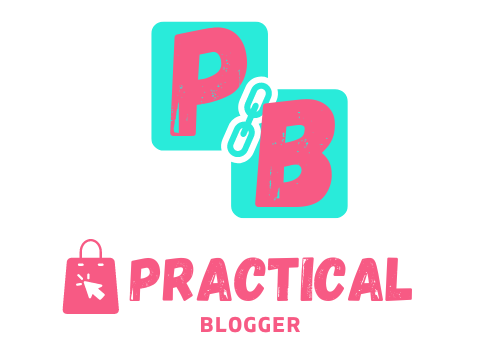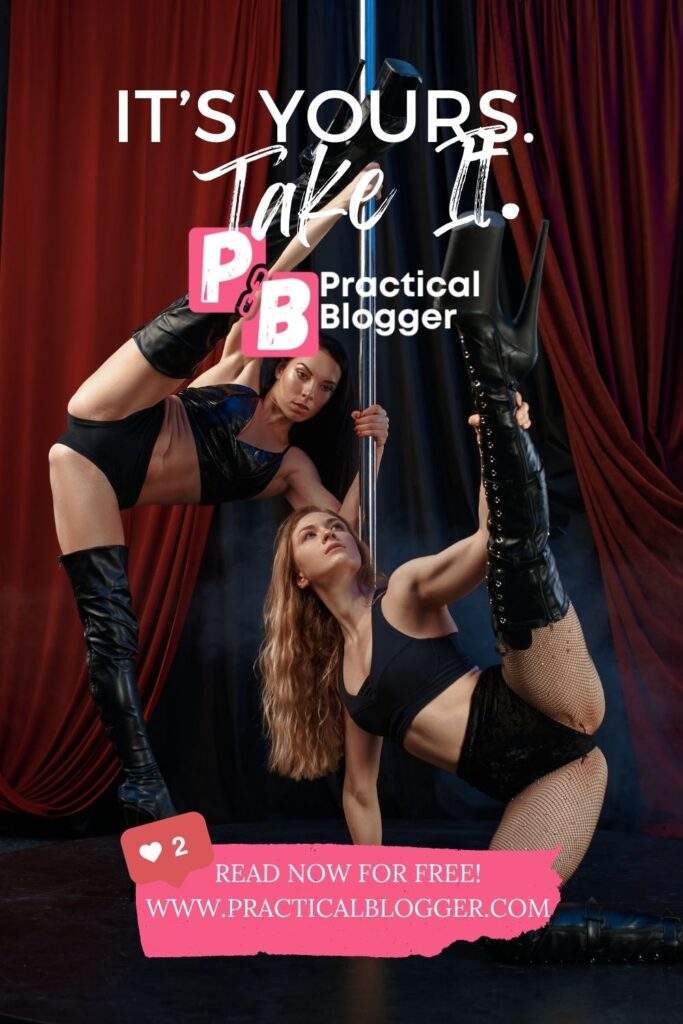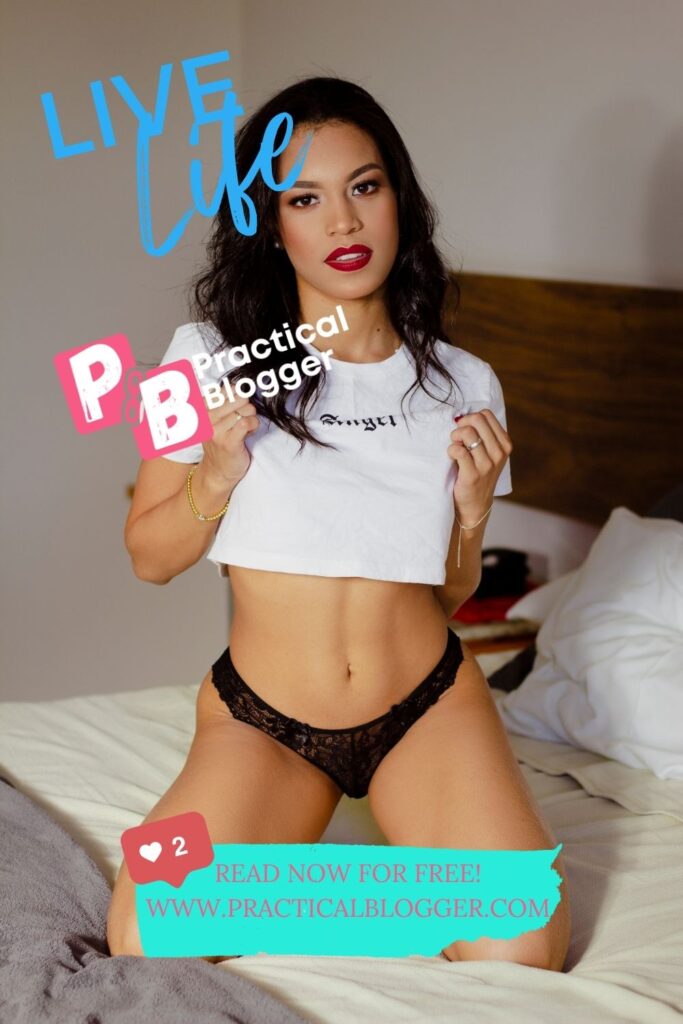Learn everything you need to know about blogging in this comprehensive guide. From setting up your blog to creating compelling content and driving traffic, discover the secrets to blogging success. Subscribe to the Practical Blogger newsletter for more expert tips!
Blogging has evolved from a personal diary-style hobby into a powerful tool for businesses, individuals, and organizations to share their thoughts, expertise, and stories with the world. Whether you’re a seasoned blogger or just starting, this comprehensive guide will provide you with the knowledge and insights needed to succeed in the ever-growing blogosphere.
In this article, we’ll cover everything you need to know about blogging, including setting up your blog, creating high-quality content, optimizing for search engines, and promoting your blog effectively. By the end, you’ll be equipped with the tools and strategies to build a successful blog that reaches and engages your target audience.
- Start a Money Making Blog – Learning Objectives
- Chapter 1: Understanding Blogging
- Chapter 2: Choosing a Blogging Platform
- Chapter 3: Setting Up Your Blog
- Chapter 4: Crafting Compelling Content
- Chapter 5: Mastering SEO for Your Blog
- Chapter 6: Blog Promotion and Marketing
- Chapter 7: Monetizing Your Blog
- Chapter 8: Blogging Best Practices
- Conclusion
- Comparison of Blogging Platforms
- Frequently Asked Questions (FAQs)
Start a Money Making Blog – Learning Objectives
- Understanding Blogging
- Choosing a Blogging Platform
- Setting Up Your Blog
- Crafting Compelling Content
- Mastering SEO for Your Blog
- Blog Promotion and Marketing
- Monetizing Your Blog
- Blogging Best Practices
- Conclusion
Chapter 1: Understanding Blogging
Before we dive into the nitty-gritty of blogging, let’s start with the basics. What exactly is a blog, and why should you consider starting one?
A blog is a regularly updated website or online platform where individuals or groups share their thoughts, ideas, and experiences on various topics. Blogs can serve multiple purposes, including personal expression, education, entertainment, or even business promotion.
Blogging offers numerous benefits, such as:
- Personal Expression: It provides an outlet for your thoughts and creativity.
- Sharing Knowledge: You can share your expertise and knowledge with a global audience.
- Building a Community: Blogs can help you connect with like-minded individuals.
- Business Opportunities: Blogging can be a lucrative venture if you monetize it effectively.
Now that you understand what blogging is, let’s move on to the practical steps to get started.
Chapter 2: Choosing a Blogging Platform
Selecting the right blogging platform is a crucial first step in your blogging journey. There are several popular options available, each with its own set of features and advantages. Here are some of the most widely used platforms:
- WordPress: Known for its flexibility and versatility, WordPress powers a significant portion of the internet. It offers countless themes and plugins, making it suitable for various types of blogs.
- Blogger: Owned by Google, Blogger is a user-friendly platform ideal for beginners. It’s a good choice if you want a simple and free option to get started.
- Medium: Medium is a platform focused on content and writing. It’s a great choice if you want to reach a built-in audience of readers.
- Wix: Wix is a website builder that also offers blogging functionality. It’s a user-friendly option with drag-and-drop features for easy customization.
- Squarespace: If aesthetics are important to you, Squarespace provides visually stunning templates and a user-friendly interface.
- Ghost: Ghost is a platform designed specifically for bloggers and content creators. It’s known for its simplicity and elegant writing experience.
When choosing a platform, consider factors like your technical skills, budget, and long-term goals. WordPress is often recommended for its flexibility, but other platforms may be a better fit depending on your needs.
Chapter 3: Setting Up Your Blog
Once you’ve chosen a platform, it’s time to set up your blog. This involves several key steps:
- Selecting a Domain Name: Choose a domain name that reflects your blog’s topic or brand. Keep it short, memorable, and easy to spell.
- Purchasing Hosting: If you opt for a self-hosted WordPress blog, you’ll need to choose a reliable hosting provider. Popular options include Bluehost, SiteGround, and HostGator.
- Installing WordPress: If you’re using WordPress, most hosting providers offer one-click WordPress installations, making the setup process straightforward.
- Customizing Your Blog: Select a theme that aligns with your blog’s niche and customize it to create a unique look. Don’t forget to add essential pages like “About,” “Contact,” and a privacy policy.
- Installing Essential Plugins: Enhance your blog’s functionality with plugins. Consider installing SEO plugins like Yoast SEO, caching plugins for faster loading times, and security plugins to protect your site.
- Creating a Content Strategy: Plan what types of content you’ll publish, how often, and who your target audience is. A well-thought-out content strategy will keep your blog focused and organized.
With your blog set up and ready to go, it’s time to start creating compelling content.
Chapter 4: Crafting Compelling Content
Content is the heart of any successful blog. To engage your readers and keep them coming back, you need to create high-quality, valuable content. Here are some essential tips for crafting compelling blog posts:
- Choose Relevant Topics: Research and select topics that are relevant to your niche and audience. Use tools like Google Trends and keyword research to identify popular topics.
- Write Captivating Headlines: Your headlines should grab readers’ attention and convey the main benefit of reading your post. Use power words and curiosity to entice clicks.
- Structure Your Posts: Use clear headings, subheadings, and bullet points to make your content easy to scan. Readers should be able to quickly grasp the main points.
- Incorporate Visuals: Add images, infographics, and videos to make your content visually appealing and more engaging.
- Provide Value: Offer valuable insights, solutions, or entertainment to your readers. Aim to solve their problems or answer their questions.
- Edit and Proofread: Always edit and proofread your posts for grammar and spelling errors. Error-free content appears more professional.
- Engage with Your Audience: Encourage reader interaction by responding to comments and questions. Building a community around your blog can enhance its success.
- Consistency is Key: Stick to a consistent posting schedule to keep your audience engaged and returning for more.
Chapter 5: Mastering SEO for Your Blog
Search Engine Optimization (SEO) is essential for driving organic traffic to your blog. When your content ranks well on search engines like Google, it becomes more discoverable. Here’s how to master SEO for your blog:
- Keyword Research: Identify relevant keywords related to your blog’s topics. Use tools like Google Keyword Planner and SEMrush to find keywords with good search volume and low competition.
- On-Page SEO: Optimize individual blog posts by including your target keywords in the title, headings, and throughout the content. Use meta descriptions and alt tags for images.
- Quality Backlinks: Build high-quality backlinks from reputable websites. Guest posting, outreach, and creating valuable, shareable content can help you acquire backlinks.
- Mobile Optimization: Ensure your blog is mobile-friendly, as Google considers mobile usability when ranking websites.
- Site Speed: Improve your blog’s loading speed by optimizing images and using a reliable hosting provider.
- SSL Certificate: Secure your blog with an SSL certificate, as Google gives preference to secure websites in search rankings.
- Regular Updates: Keep your content fresh and up-to-date. Google favors blogs that regularly publish new content.
- User Experience: Create a user-friendly website with a clear navigation menu and easy-to-read content.
By implementing these SEO strategies, you can improve your blog’s visibility in search engine results pages (SERPs) and attract more organic traffic.
Chapter 6: Blog Promotion and Marketing
Creating great content is only half the battle; you also need to promote your blog effectively to reach a wider audience. Here are some strategies for blog promotion and marketing:
- Social Media Marketing: Share your blog posts on social media platforms like Facebook, Twitter, Instagram, and LinkedIn. Engage with your followers and encourage them to share your content.
- Email Marketing: Build an email list and send regular newsletters with your latest blog posts, updates, and exclusive content.
- Collaborate with Influencers: Partner with influencers in your niche to reach their followers and gain credibility.
- Guest Posting: Write guest posts for other blogs in your niche. This can help you establish authority and drive traffic back to your own blog.
- Content Syndication: Submit your content to platforms like Medium and LinkedIn Pulse to reach a broader audience.
- Search Engine Marketing (SEM): Use paid advertising on platforms like Google Ads to promote your blog and drive traffic.
- Networking: Attend industry-related events, conferences, and webinars to connect with others in your niche.
- Engage with Communities: Participate in online forums and communities related to your niche. Provide value and share your expertise to attract readers.
Effective blog promotion involves a combination of these strategies, tailored to your target audience and niche.
Chapter 7: Monetizing Your Blog
While many bloggers start out as hobbyists, some eventually seek to monetize their blogs. There are various ways to make money from your blog, including:
- Advertising: Display ads on your blog using platforms like Google AdSense or join ad networks that cater to your niche.
- Affiliate Marketing: Promote products or services related to your niche and earn commissions on sales generated through your affiliate links.
- Sponsored Posts: Partner with brands and write sponsored content or product reviews in exchange for payment.
- Sell Digital Products: Create and sell digital products such as e-books, online courses, or downloadable resources.
- Offer Services: If you have expertise in your niche, offer consulting, coaching, or freelance services to your readers.
- Subscription Models: Offer premium content or a members-only section of your blog for a subscription fee.
- Donations and Crowdfunding: Ask your readers for donations or set up a Patreon page to fund your blog.
The monetization method you choose should align with your blog’s niche and audience. Keep in mind that building a substantial income from blogging often takes time and persistence.
Chapter 8: Blogging Best Practices
To wrap up this comprehensive guide, let’s explore some best practices that will help you succeed as a blogger:
- Stay Consistent: Stick to a regular posting schedule to keep your audience engaged.
- Engage with Your Audience: Respond to comments, emails, and messages promptly. Building relationships with your readers is essential.
- Continuously Learn: Stay updated with the latest trends, tools, and techniques in blogging and your niche.
- Monitor Analytics: Use tools like Google Analytics to track your blog’s performance. Analyze which posts are most popular and adjust your content strategy accordingly.
- Protect Your Content: Use plagiarism checkers to ensure your content isn’t being copied without your permission.
- Network: Connect with other bloggers and industry experts through social media and networking events.
- Legal Considerations: Familiarize yourself with copyright laws, privacy policies, and disclosure requirements, especially if you monetize your blog.
- Have Patience: Blogging success doesn’t happen overnight. It takes time to build an audience and see significant results.
Conclusion
Blogging is a rewarding and dynamic endeavor that allows you to express your creativity, share your expertise, and connect with a global audience. By following the steps outlined in this comprehensive guide, you can set up, grow, and monetize your blog effectively.
Whether you’re a seasoned blogger looking to improve your skills or a beginner taking your first steps into the blogosphere, the key to success is dedication, passion, and a commitment to providing value to your readers.
If you found this guide helpful, don’t forget to subscribe to the Practical Blogger newsletter for more expert tips, updates, and exclusive content to help you on your blogging journey. Subscribe today and take your blogging to the next level!
Comparison of Blogging Platforms
In this section, we’ll compare popular blogging platforms based on various factors such as ease of use, customization, and features. Choosing the right platform is a crucial decision in your blogging journey, and this comparison table will help you make an informed choice.
| Platform | Ease of Use | Customization | Features | Pricing |
| WordPress | Moderate | High | Extensive | Varies (Free to |
| Premium Plans) | ||||
| Blogger | Very Easy | Limited | Basic | Free |
| Medium | Very Easy | Limited | Simple & Focused | Free |
| Wix | Easy | High | Comprehensive | Varies (Free to |
| Premium Plans) | ||||
| Squarespace | Easy | High | Aesthetic Design | Varies (Free to |
| Premium Plans) | ||||
| Ghost | Moderate | Moderate | Blog-Centric | Varies (Free to |
| Premium Plans) |
Key Considerations:
- Ease of Use: This factor reflects how user-friendly the platform is for beginners. Very Easy indicates a low learning curve, while Moderate suggests some initial learning required.
- Customization: High customization means you can tailor your blog’s appearance and functionality extensively, while Limited customization offers fewer options.
- Features: Extensive features include a wide range of tools and plugins for various purposes. Basic features offer core functionality without many extras.
- Pricing: The cost of using the platform, ranging from free to premium plans with additional features and support.
Remember that the best platform for you depends on your specific needs, technical skills, and long-term goals as a blogger.
Frequently Asked Questions (FAQs)
In this FAQ section, we’ll address common questions that bloggers often have when starting and managing their blogs. If you have additional questions or need further clarification, feel free to reach out through the comments or our Practical Blogger newsletter.
Blogger and Medium are excellent choices for beginners due to their user-friendly interfaces and straightforward setup processes. However, WordPress, while requiring a bit more initial learning, offers more flexibility and customization options.
While it’s not mandatory, having a custom domain (e.g., www.yourblogname.com) is recommended. It looks more professional and helps with branding. Most blogging platforms allow you to purchase and set up custom domains easily.
Consistency is key. Establish a posting schedule that you can realistically maintain, whether it’s once a week, biweekly, or monthly. Regular, high-quality content keeps your audience engaged.
SEO (Search Engine Optimization) is the practice of optimizing your blog’s content to rank higher in search engine results. It’s crucial because it helps drive organic (unpaid) traffic to your blog, increasing your visibility and reach.
There are various monetization methods, including advertising, affiliate marketing, sponsored posts, selling digital products, offering services, subscriptions, and donations. The best method depends on your niche and audience.
Yes, engaging with your audience is highly recommended. Respond to comments, emails, and messages. Building relationships with your readers fosters loyalty and encourages return visits.
Blogging success doesn’t happen overnight. It can take several months to a year or more to see significant traffic and income. Consistency, high-quality content, and effective promotion are key to accelerating your progress.
Yes, bloggers should be aware of copyright laws, privacy policies, and disclosure requirements, especially if they monetize their blogs. It’s essential to respect intellectual property and disclose any potential conflicts of interest.
Yes, you can migrate your blog to a different platform, but it can be a complex process. It’s best to choose the right platform initially to avoid the hassle of migration.
We hope these FAQs provide valuable insights into your blogging journey. If you have more questions or need further assistance, don’t hesitate to reach out and explore the resources available to you as a blogger.
You might also like:
- GoHighLevel Snapshots for Sale: A Buyer’s Guide
- How to Create Snapshots in GoHighLevel to Save Time and Streamline Your Workflow
- GoHighLevel Login Tips and Tricks: The Ultimate Guide
- How to Use GoHighLevel to Grow Your Business
- How to Become a GoHighLevel Top Affiliate and Earn Passive Income
- GoHighLevel Pricing Plans: A Comprehensive Guide
- GoHighLevel Support: Get Help 24/7
- Related Reading: Why Start a Blog: Purpose and Benefits
- Related Reading: How Blogging Can Help You Discover Your Passion and Life Purpose
- Related Reading: How to Find Motivation to Start a Blog
- Related Reading: Identifying Personal and Professional Goals for Your Blog













